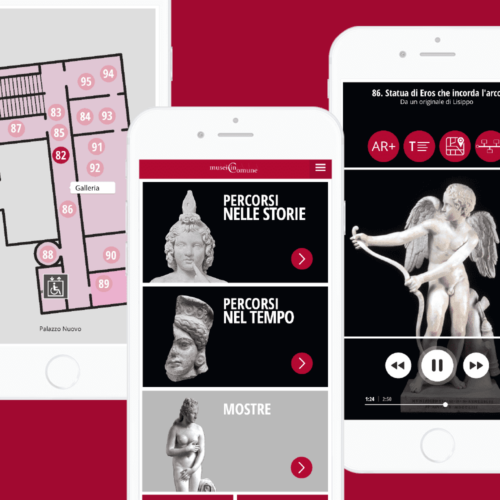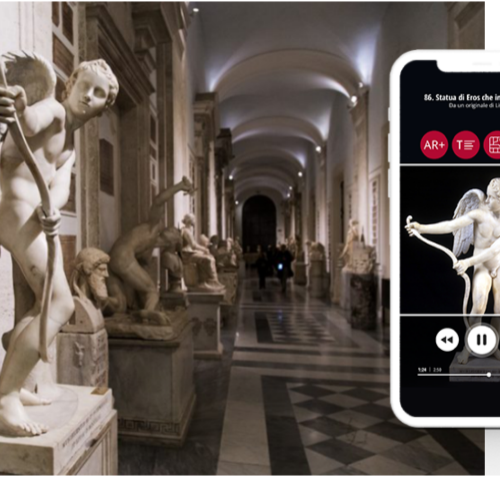Musei Civici di Roma - Video guides
Zètema Culture Project
OUR SERVICES
- Content Production
- App Design
- Video Production
Rich in interactive content and with customisable routes, the video guides created by ETT for the Civic Museums are the new interactive key that opens the door to Roman art



In Trajan’s Market and Ara Pacis, the storytelling is entrusted respectively to the emperor Trajan and his architect, Apollodorus of Damascus, who discuss the great architectural works realised and to be realised, and to Pax, the divinity formalised by Augustus to whom the Ara Pacis was dedicated, who leads visitors on a discovery of the monument.
The application has three macro sections:
- Paths in the Stories, through which it is possible to access thematic routes with a predetermined duration,
- Time Line, with a time macro-line in which the museum’s works and the main related historical events are included, and
- Exhibitions, with detailed descriptions of the exhibitions in the Musei in Comune circuit.
The Paths in the Stories section presents prepared routes that can be chosen by visitors according to their own time availability.
After selecting one of the tour routes, users will walk through the museum’s halls receiving, for each of them, a suggestion of the works in the vicinity concerned by the chosen route, thanks to beacon technology.
By clicking on each work, users will have access to a detail sheet consisting of an explanatory image, a related audio, and in some cases, an image gallery.
The application provides access to a number of in-depth icons for each work:
-Text: to facilitate accessibility for users with hearing disabilities, there is a text version of the audio track adapted and optimised for the deaf;
-Map: for greater orientation in the spaces, it will be possible to call up the museum map, which will highlight the room in which the work being consulted is located;
-Time line: each work of art will be placed within a macro-chronology that makes it possible to identify the historical period in which it was created and the related historical events;
-AR: will indicate the presence of Augmented Reality content visible by framing 5 the work with the camera of the rented device or of one’s smartphone;
-Search Work: users will be able to obtain specific information on an individual work by entering the corresponding number on the keypad.
